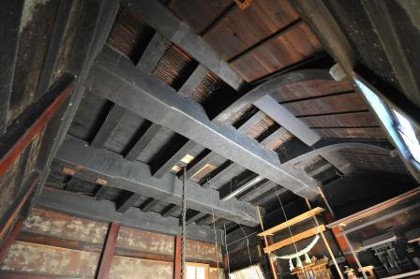
I think Japanese people have been wasting various wisdom of their traditional architecture that had been accumulated for long time. It is similar idea to water that Japanese people are not grateful about because of a plentiful supply. Nowadays, I feel that timber is especially neglected.
Many people think that reinforced‐concretes are better than timber.
However, reinforced‐concretes cause some problems. For example, fires
frequently occur in a fireproof reinforced buildings of were concreted and
30 or more lives were often lost.
A thermal insulation performance of the building is raised too much. As a result, a lot of residents are having troubles in condensation.
We could reconsider about strength of materials, too. Let’s compare unit
weight of material strength. Even through Japanese cedar is lowest strength in timbers, that have a quadrupling tensile strength of steels and has quintuple compressive strength of concretes.
According to the material strength of unit weight, Japanese cedar is sufficient enough by quarter of steel weight and one fifth of concrete weight.
Timber architecture is appropriate to Japan, a country with frequent earthquakes, because seismic force increase in proportion to construction weight. The timber is resistant to vertical load, but is not to lateral load. Japanese ancient carpenter devised various methods to make up for the weak point.
For instance, “Chounabari” is one of beams that utilizes the crook in a
tree. It is received the roof load by the crook in a tree grew on a slope. The back of “Chounabari” supports upper beam and transmits the load to under beam.

Chounabari (Teppoubari)
As become clear above, I feel that Japanese found the precious contrivance from relationship with trees. They also have a thoughtful of trees with warmth.
Hironobu FURIHATA

 5F Design Center Building
5F Design Center Building